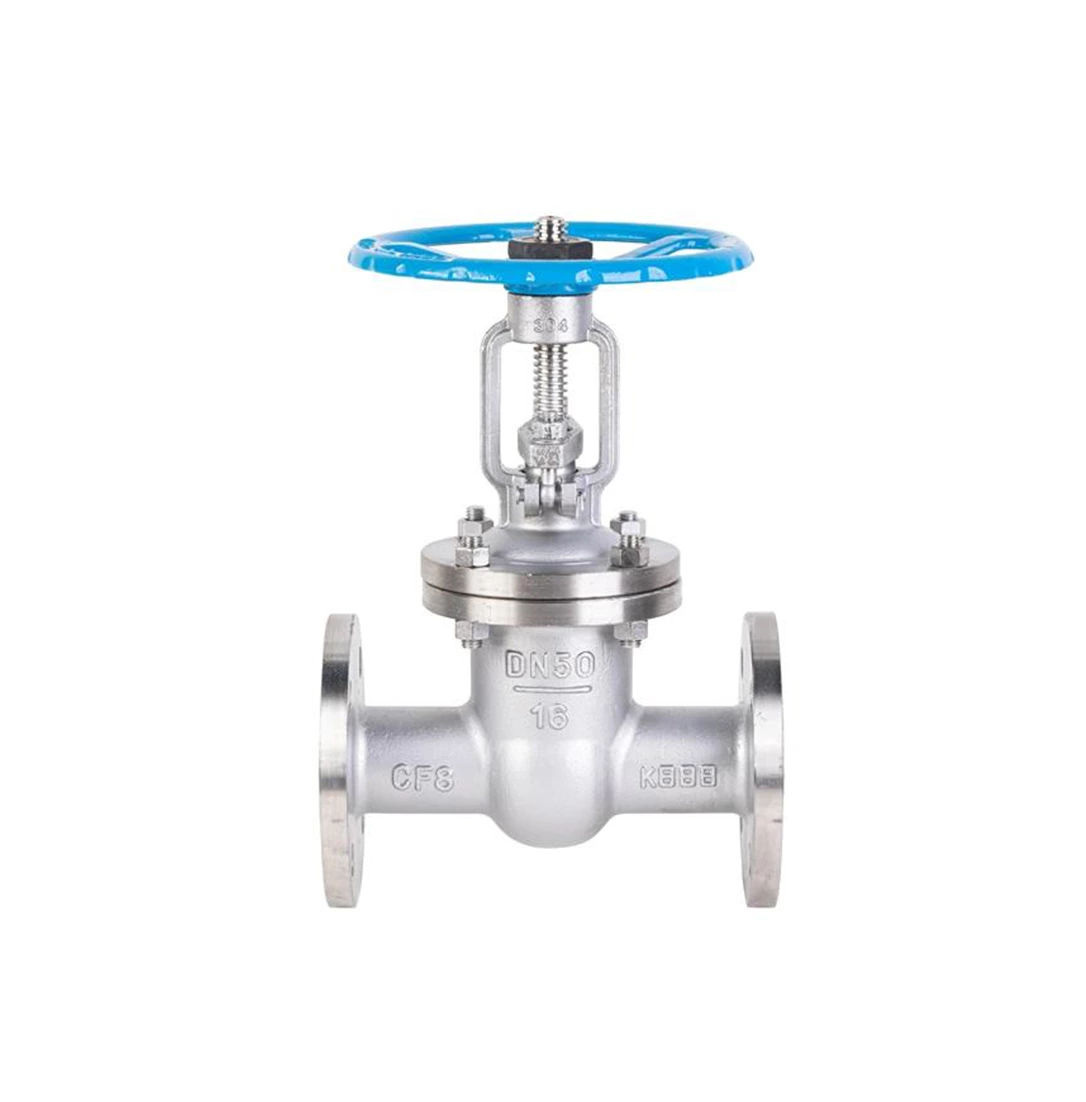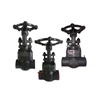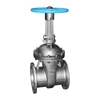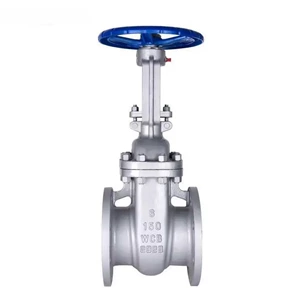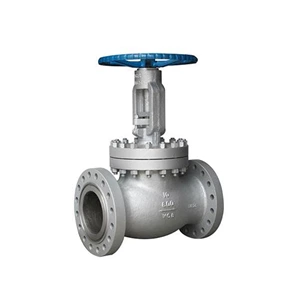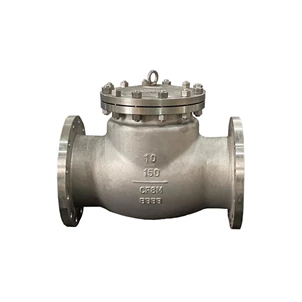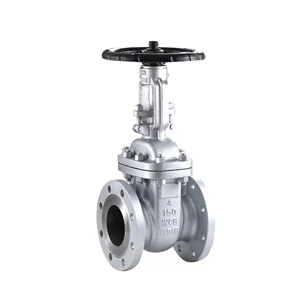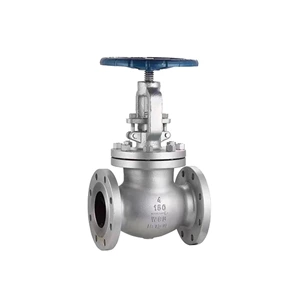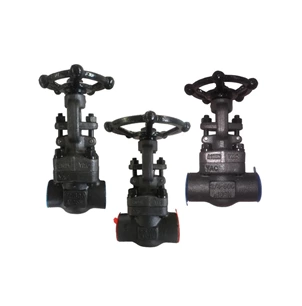What Is The Difference Between Forged Steel Valves And Cast Steel Valves? Which One Is Better?
What is the difference between forged steel valves and Cast Steel Gate Valve? Which one is better?
Cast steel valves are steel used for casting. A type of casting alloy. Cast steel is divided into three categories: cast carbon steel, cast low alloy steel and cast special steel. Cast steel refers to a type of steel casting produced by casting. Cast steel is mainly used to manufacture some parts with complex shapes, difficult to forge or cut and require high strength and plasticity.
Forged steel refers to various forgings and forgings produced by forging. The quality of forged steel parts is higher than that of cast steel parts, and they can withstand large impact forces. The plasticity, toughness and other mechanical properties are also higher than those of cast steel parts. Therefore, all important machine parts should use forged steel parts.
The difference between forged steel valves and cast steel valves
The quality of forged steel valves is better than that of cast steel valves, and they can withstand large impact forces. The plasticity, toughness and other mechanical properties are also higher than those of cast steel parts, but the nominal diameter is relatively small, generally below DN50. The pressure level of cast valves is relatively low, and the commonly used nominal pressures are PN16, PN25, PN40, 150LB-900LB. Forged steel valve levels: PN100, PN160, PN320, 1500LB-3500LB, etc. Cast steel is mainly used to manufacture some parts with complex shapes, difficult to forge or cut, and requiring high strength and plasticity.
Casting is liquid molding, while forging is a plastic deformation process. Forging molded workpieces can improve the internal structure of the organization, have good mechanical properties, and uniform grains. Important and difficult workpieces must be forged. Casting will cause organizational segregation and organizational defects. Of course, casting has its advantages. It is not easy to open the mold for forging complex workpieces, so casting has been adopted.
Introduction to forged valves (forged steel valves):
1. Forging can be divided into the following according to the forming method:
(1) Closed mode forging (die forging). It can be divided into die forging, rotary forging, cold heading, extrusion, etc. The metal blank is placed in a forging die with a certain shape and deformed under pressure to obtain a forging. According to the deformation temperature, it can be divided into cold forging (forging temperature is room temperature), warm forging (forging temperature is lower than the recrystallization temperature of the blank metal), and hot forging (forging temperature is higher than the recrystallization temperature).
(2) Open forging (free forging). There are two methods: manual forging and mechanical forging. The metal blank is placed between the upper and lower anvils (iron) and the impact force or pressure is used to deform the metal blank to obtain the required forging.
2. Forging is one of the two major components of forging. Important parts with high load and severe working conditions in machinery are mostly forged. Simpler shapes can be rolled welded parts, except for profiles and plates. Forging can eliminate welding holes and cast looseness of metal materials.
3. Correct selection of forging ratio is very important to improve product quality and reduce costs. Forging materials are mainly carbon steel, stainless steel and alloy steel. Forging ratio refers to the ratio of the cross-sectional area of the metal before deformation to the cross-sectional area after deformation. The original state of the material includes ingots, bars, liquid metal and metal powder.
4. The mechanical properties of forgings are generally better than those of castings of the same material. Forging is a processing method that applies pressure to the metal blank by a forging machine to cause the metal blank to undergo plastic deformation to obtain a certain shape and size with good mechanical properties.
Detailed introduction to cast valves (cast steel valves):
1. There are many types of casting, including ordinary sand casting and special casting according to the molding method:
① Ordinary sand casting, including three types: dry sand mold, wet sand mold and chemical hardening sand mold.
② Special casting, divided into two categories according to the casting material: special casting of ore and special casting of metal materials;
Special casting with metal as casting material, including: pressure casting, metal mold casting, low pressure casting, continuous casting, centrifugal casting, etc.;
Special casting with natural mineral sand and stone as casting material, including: real mold casting, investment casting, foundry shell casting, mud casting, negative pressure casting, ceramic casting, etc.
2. Casting is a metal hot processing technology. Casting production has good comprehensive mechanical properties, wide adaptability, and low cost of blanks. For parts with complex shapes, especially those with complex internal structures, it can better show the economy of casting production.
3. Casting is the basic process of modern machinery manufacturing industry. It is to melt metal into liquid and pour it into the casting mold. After cooling and solidification, the casting is taken out and cleaned to obtain a casting (blank or parts) with predetermined size, shape and mechanical properties.
4. Casting process usually includes:
① Preparation of casting mold (the mold used to make liquid metal into solid castings. The quality of the casting mold directly affects the quality of the casting). Casting molds can be divided into disposable molds, multiple molds and permanent molds according to the number of uses. Casting molds are divided into metal molds, sand molds, mud molds, ceramic molds, graphite molds, etc. according to materials.
② Melting and pouring of casting metal. Casting metals mainly include cast iron, carbon steel and stainless steel;
③ Treatment and inspection of castings. Casting treatment includes removing foreign matter and cores on the surface of castings, handling protrusions (grinding burrs, cutting off pouring risers and handling seams, etc.), heat treatment, shaping, rough processing and rust prevention of castings.
5. Disadvantages of casting production methods. Casting will produce noise, harmful gases and dust, etc., which pollute the environment, and the required materials (such as molding materials, metals, fuels, wood, etc.) and equipment (such as core making machines, metallurgical furnaces, molding machines, sand mixers, shot blasting machines, etc.) are more.
6. Cast steel is divided into three categories: cast carbon steel, cast low alloy steel and cast special steel.
① Cast carbon steel. Cast steel with carbon as the main alloying element and a small amount of other elements. Cast low carbon steel contains less than 0.2% carbon, cast medium carbon steel contains 0.2% to 0.5% carbon, and cast high carbon steel contains more than 0.5% carbon. With the increase of carbon content, the strength of cast carbon steel increases and the hardness increases. Cast carbon steel has high strength, plasticity and toughness, and low cost. It is used in heavy machinery to manufacture parts that bear heavy loads, such as rolling mill frames, hydraulic press bases, etc.; it is used on railway vehicles to manufacture parts that bear large forces and impacts, such as bolsters, side frames, wheels and couplers.
② Cast low alloy steel. Cast steel containing alloying elements such as manganese, chromium, and copper. The total amount of alloying elements is generally less than 5%, has greater impact toughness, and can obtain better mechanical properties through heat treatment. Cast low alloy steel has better performance than carbon steel, can reduce the weight of parts, and increase service life.
③ Casting special steel. There are many varieties of alloy cast steels refined to meet special needs, usually containing one or more high-amount alloying elements to obtain certain special properties. For example, high manganese steel containing 11% to 14% manganese can withstand impact wear and is mostly used for wear-resistant parts of mining machinery and engineering machinery; various stainless steels with chromium or chromium-nickel as the main alloying elements are used for parts working under corrosive or high-temperature conditions above 650°C, such as valve bodies, pumps, containers for chemical industry, or turbine housings of large-capacity power stations.
Valve casting process:
1. Casting: It is a process of melting metal into a liquid that meets certain requirements and pouring it into a casting mold, and then cooling, solidifying, and cleaning to obtain a casting (parts or blank) with a predetermined shape, size and performance. The basic process of modern machinery manufacturing industry.
2. The cost of blanks produced by casting is low, and it can better show its economy for parts with complex shapes, especially those with complex inner cavities; at the same time, it has a wide adaptability and good comprehensive mechanical properties.
3. However, the materials (such as metal, wood, fuel, modeling materials, etc.) and equipment (such as metallurgical furnaces, sand mixers, molding machines, core making machines, sand dropping machines, shot blasting machines, cast iron plates, etc.) required for casting production are relatively large, and dust, harmful gases and noise will be generated to pollute the environment.
4. Casting is one of the earliest metal heat processing technologies mastered by humans, with a history of about 6,000 years. In 3200 BC, copper frog castings appeared in Mesopotamia. Between the 13th and 10th centuries BC, China had entered the heyday of bronze castings, and the craftsmanship had reached a fairly high level. For example, the 875-kilogram Simuwu Fangding of the Shang Dynasty, the Zenghouyi Zunpan of the Warring States Period, and the light-transmitting mirror of the Western Han Dynasty are all representative products of ancient casting. Early casting was greatly influenced by pottery, and most of the castings were tools or utensils for agricultural production, religion, and life, with a strong artistic color. In 513 BC, China cast the world's earliest recorded cast iron - the Jin State Casting Tripod (weighing about 270 kg). Around the 8th century AD, Europe began to produce cast iron. After the Industrial Revolution in the 18th century, castings entered a new era of serving large industries. In the 20th century, casting developed rapidly, and ductile iron, forgeable iron, ultra-low carbon stainless steel, aluminum-copper, aluminum-silicon, aluminum-magnesium alloys, titanium-based, nickel-based alloys and other casting metal materials were developed successively, and a new process for inoculating gray cast iron was invented. After the 1950s, new processes such as wet sand high-pressure molding, chemical hardening sand molding and core making, negative pressure molding and other special casting, shot blasting cleaning appeared.
5. There are many types of casting, which are usually divided into:
① Ordinary sand casting, including wet sand, dry sand and chemical hardening sand.
② Special casting, according to the molding materials, can be divided into two categories: special casting with natural mineral sand and stone as the main molding materials (such as investment casting, clay casting, foundry shell casting, negative pressure casting, solid casting, ceramic casting, etc.) and special casting with metal as the main casting material (such as metal mold casting, pressure casting, continuous casting, low pressure casting, centrifugal casting, etc.).
6. Casting process usually includes:
① Preparation of casting mold (container for making liquid metal into solid casting). According to the materials used, casting mold can be divided into sand mold, metal mold, ceramic mold, mud mold, graphite mold, etc., and according to the number of times used, it can be divided into disposable mold, semi-permanent mold and permanent mold. The quality of casting mold preparation is the main factor affecting the quality of casting;
② Melting and pouring of casting metal. Casting metal (casting alloy) mainly includes cast iron, cast steel and cast non-ferrous alloy;
③ Casting treatment and inspection. Casting treatment includes removing foreign matter from the core and casting surface, cutting off the pouring riser, grinding burrs and seams, as well as heat treatment, shaping, rust prevention and rough processing. Imported pump valve
Valve forging process:
1. Forging: It is a processing method that uses forging machinery to apply pressure to metal blanks to make them plastically deform to obtain forgings with certain mechanical properties, certain shapes and sizes.
2. One of the two major components of forging. Forging can eliminate the looseness of the metal in the casting state and weld the holes. The mechanical properties of forgings are generally better than those of castings of the same material. For important parts in machinery with high loads and severe working conditions, except for the simpler shapes that can be rolled plates, profiles or welded parts, forgings are mostly used.
3. Forging can be divided into the following types according to the forming method:
① Open forging (free forging). The metal is deformed between the upper and lower irons (anvils) by impact force or pressure to obtain the required forgings. There are mainly two types: manual forging and mechanical forging.
② Closed forging. The metal billet is compressed and deformed in the forging die cavity with a certain shape to obtain forgings. It can be divided into die forging, cold heading, rotary forging, extrusion, etc. According to the deformation temperature, forging can be divided into hot forging (processing temperature is higher than the recrystallization temperature of the billet metal), warm forging (lower than the recrystallization temperature) and cold forging (normal temperature).
4. The materials used for forging are mainly carbon steel and alloy steel of various compositions, followed by aluminum, magnesium, titanium, copper, etc. and their alloys. The original state of the material includes bars, ingots, metal powder and liquid metal. The ratio of the cross-sectional area of the metal before deformation to the cross-sectional area after deformation is called the forging ratio. Correctly selecting the forging ratio has a great impact on improving product quality and reducing costs.
